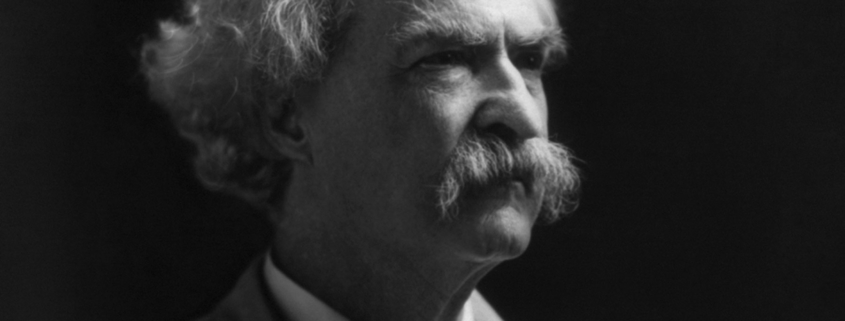Mark Twain’s Path To Bankruptcy
“There are two times in a man’s life when he should not speculate: when he can’t afford it and when he can.” -Mark Twain
This quip from Mark Twain, the pen name of author Samuel L. Clemens, was actually a hard-earned lesson. Although Twain married into a wealthy family, and was one of the most successful writers and lecturers of all time, he made such poor business decisions that he was forced to declare bankruptcy.
What business mistakes led to his bankruptcy?
Although he made many business mistakes, two big ones stand out.
First, he sank the modern equivalent of millions of dollars into a machine called the Paige Typesetter, which promised to revolutionize the printing world. For over a decade, the machine’s inventor, James Paige, promised — and Twain believed — that just a couple more mechanical tweaks were needed to get things up and running perfectly. According to an article in Time, “At first, Twain had called Paige—who would run through four sets of backers—the ‘Shakespeare of mechanical invention.’ By the end, he fantasized about catching a certain part of Paige’s anatomy in a steel trap and watching him slowly bleed to death.”
Around this same time, Twain also started his own publishing company. For years he had complained that he publishers were robbing him blind, so when it came time to publish The Adventures of Huckleberry Finn, Twain decided to do it himself. He hired his nephew to run his new venture, and things started off well. Twain’s book sold well, as did the autobiography of President Grant, which Twain had given Grant a very generous contract for. The problem was every other book published by the company flopped. At a time when books were still expensive, relatively difficult to acquire possessions, there was no commercial market for collections of sermons, a book on 75 ways to cook eggs, or an in-depth analysis of the speech of monkeys.
Thanks to these investments, and his relatively lavish lifestyle, Twain was spending money faster than he could make it. On the advice of a friend, Twain transferred all of his assets to his wife and filed for bankruptcy. He owed $80,000, which would be more than $2 million today, to authors, bookbinders, and a bank.
In order to get back on his feet, Twain embarked on an ambitious lecture series that took him around the world and inspired many more people to buy copies of his books. He ended earning enough money to more than comfortably support his family, and pay back all the debts he had forgiven through bankruptcy, even though he had no obligation to do so.
What can we learn?
There are two take-aways from Twain’s bankruptcy story that are important to note.
The first is transferring your assets to someone else in anticipation of filing for bankruptcy is illegal. Don’t take Twain’s friend’s advice and do the same. Instead, make an appointment to talk with an experienced bankruptcy attorney. It is likely you will be able to hang on to more assets than you think thanks to the way modern bankruptcy laws work.
The second is that bankruptcy doesn’t take away from who you are. Twain came out of bankruptcy and went right back to work rebuilding his fortune. He continued to make poor business decisions, but on a smaller scale. Instead of sending time speculating, he devoted his attention to his family and the things he knew he was good at doing that actually made money — writing and lecturing. Like Twain, we should all use bankruptcy as a way to refocus our priorities.




Leave a Reply
Want to join the discussion?Feel free to contribute!